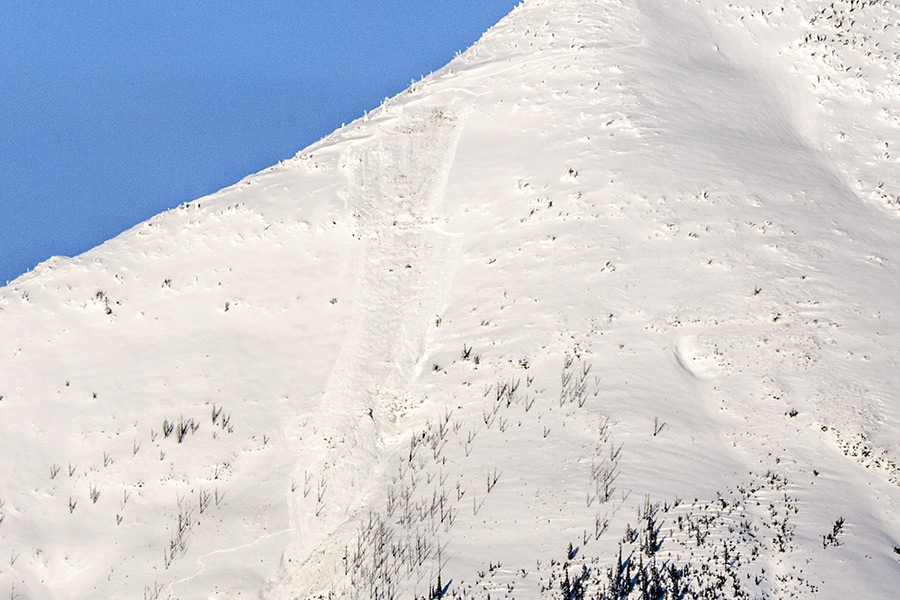The Flathead Avalanche Center has released its final incident report detailing an avalanche fatality that involved 36-year-old Kalispell native Ben Parsons, an experienced backcountry skier and accomplished endurance athlete who died Jan. 5 in Glacier National Park.
Parsons, who worked as a firefighter in Whitefish, was skiing a southwest-facing aspect on Stanton Mountain when, after weighting his skis to test the snowpack’s stability, he triggered an avalanche that released just above him, knocking him off his feet and carrying him an estimated 1,000 vertical feet down the slope.
A frequent skiing companion and close friend, Joel Shehan, 38, watched Parsons slide down the avalanche path and slip out of view, and immediately began conducting a search with his avalanche beacon. After reaching the bottom of the debris with no signal, Shehan removed his skis and began climbing uphill through the avalanche path. Still unable to locate Parsons’ beacon signal, he eventually heard a “faint yell,” the report states.
Shehan found Parsons upside down and partially buried against a tree, critically injured but still conscious. He called 911 for an emergency medical evacuation, and warmed and cared for Parsons until the helicopter arrived.
Parsons died during the course of the rescue effort.
The Flathead Avalanche Center avalanche advisory for Jan. 5 rated conditions as moderate, stating, “Wind slabs formed early in the week may no longer present obvious signs of instability and may prove stubborn in stability tests. However, it remains possible to trigger an avalanche in these aging slabs particularly where they formed on weak, faceted snow.
“The avalanche danger is MODERATE above 5,000 feet. Carefully evaluate wind loaded areas before committing to a slope and keep in mind that small wind slab avalanches could step down to deeper weak layers in the snowpack.”
According to the report prepared by the Flathead Avalanche Center, Parsons, Shehan and a third skier parked at the Lake McDonald Lodge at approximately 10 a.m. on Jan. 5 and skied 1.5 miles up the Going-to-the-Sun Road to the North Lake McDonald Road, where they put on climbing skins and continued another 1.5 miles to the Trout Lake Trailhead.
They skinned up the trail about 2.5 miles to just below where the trail crests Howe Ridge. At that point, the skiers left the trail and began climbing up the west ridge of Stanton Mountain. When they reached the tree line, the skiers encountered a short, steep rocky knob.
At the top of the knob, the third member of the party said he was feeling ill and was going to eat some food, then descend the skin trail and retrace their path back to the parking lot, where he would wait for Parsons and Shehan to return.
Parsons and Shehan continued to follow the west ridge of Stanton toward the summit, noting a weak snowpack on their ascent to the ridge, as well as areas of weak snow and scoured surfaces along the ridge.
Upon reaching the summit and after a short break, they decided to descend the same ridge they had climbed. Parsons went first and carefully and slowly skied the ridge from the summit, limiting his exposure, the report states. They both made one or two turns on the adjacent slope, then cut skier’s right back to the ridge.
“In this fashion they made their way down to the upper portion of the sub-ridge that separates the two large southwest facing avalanche chutes,” the report states.
At approximately 2 p.m., Parsons traversed across the relatively broad ridge and into the top skier’s left of the western most of the two avalanche paths. He performed two ski pole tests in the area to determine general snowpack structure, then made one left hand turn followed by an immediate right turn.
Between these turns, Parsons weighted his skis once or twice in an attempt to test the snow stability, a test employed by experienced skiers to test small slopes with low or no consequence should an avalanche occur, according to the report.
Shortly after completing his right hand turn, Parsons triggered the avalanche, which broke off uphill and immediately knocked him off his feet.
The avalanche released at approximately 7,200 feet on a 35-degree southwest-facing slope, previously cross-loaded by north-northeast winds earlier in the week, according to the report. Parsons triggered a soft slab avalanche on a wind-loaded slope about 12 to 30 inches deep. The initial avalanche failed on a thin layer of weak, faceted snow below the wind slab and above a firm, wind-scoured layer. It subsequently stepped down and broke on a weak layer near the ground as it traveled downhill.
The crown face depth of the avalanche ranged from one to almost four feet. The avalanche was approximately 270 feet wide and traveled downslope roughly 2,300 vertical feet, and a total of 4,100 feet in length.
Both Parsons and Shehan were “very experienced in winter mountain travel and avalanche education,” the report states.
Parsons completed a Level 2 Avalanche training within the past three years, and Shehan completed a Level 1 Avalanche training.
“We offer our sincere condolences and our thoughts are with family, friends and all of those involved,” the report states. “We would like to thank Glacier National Park rangers for assistance in the field, Two Bear Air Rescue and the Flathead County Sheriff’s Office.”
